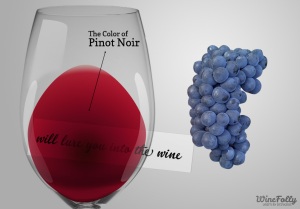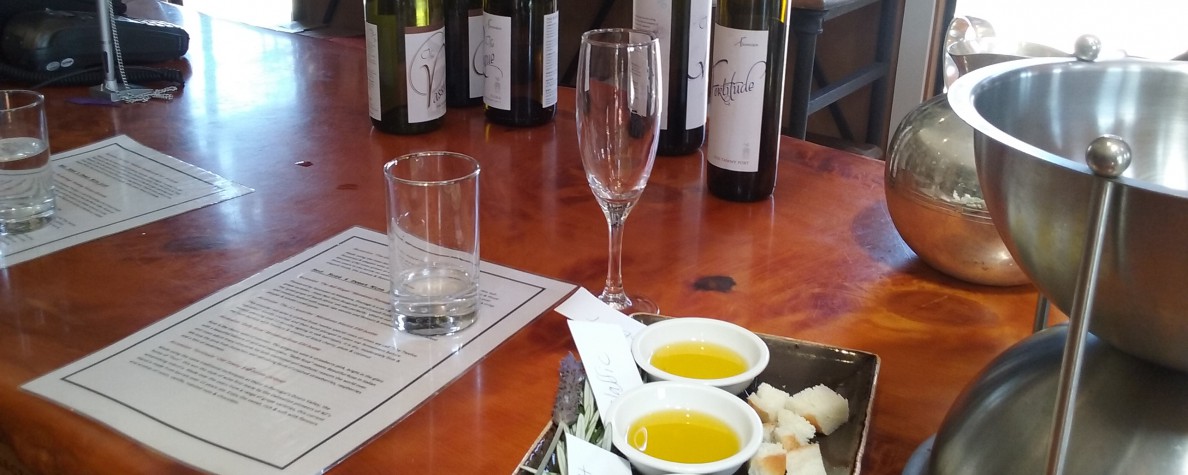
Along with Sauvignon Blanc, Pinot Noir is the quintessential New Zealand wine on the world stage, so it’s rather a pity that, along with Sauvignon Blanc, it’s one of my least favourite wine varietals. Good Pinot Noir can be lovely – but good Pinot Noir also tends to be more expensive than just about any other varietal, and cheap Pinot Noir is… well, often cheap for a reason.
Closely associated with the Burgundy region of France,which gives its name to the regional wine in which Pinot Noir is the key component, Pinot Noir is a temperamental grape varietal with a thin skin which needs a cooler climate than many other red wine varietals in order to produce its delicately-flavoured wine. It is intensely responsive to terroir, picking up distinct characteristics depending on the soil, climate, sunlight, rainfall etc. to which it is exposed. Outside of the Burgundy region only parts of New Zealand, Oregon and the cooler parts of California in the USA, and the cooler parts of Australia have really managed to satisfy its Goldilocks-like need for everything to be just right.
Pinot Noir is a red wine, typically brick red or garnet in colour. Aged wines may take on a brownish tinge. It has a light to medium body, with red fruit flavours including raspberry, cranberry and strawberry. Other flavours commonly encountered in Pinot Noir include notes of vanilla, cloves, liquorice and mushrooms as well as lingering oak notes from the barrels in which it is aged. That, you understand, is the good stuff. In my experience the cheap stuff has a tendency to smell of raw beef mince, which has a lot to do with its unfavourite status in my wine-drinking life.
Pinot Noir is light- to medium-bodied with a medium to high level of acidity and a typical ABV of 13%-14%.
A medium-priced bottle of Pinot Noir (bearing in mind that these things are relative) can be aged for around four years, while a fine bottle could last up to twenty, or even more, although if you’re planning on aging wine it is wise to check the vintage first and take that into account when calculating your storage time.
The good news is that Pinot Noir pairs well with many foods including both red and white meats. It is the traditional accompaniment to duck, but doesn’t stand up well to very strong, rich or spicy flavours.

Always drink responsibly. One standard drink of wine is approximately 100ml (3.3 fl oz). The New Zealand Ministry of Health recommends that women consume no more than 2 standard drinks a day, and no more than 10 standard drinks a week, and that men consume no more than 3 standard drinks a day and no more than 15 standard drinks a week (note that this is slightly lower than the limits recommended by the World Health Organisation). The World Health Organisation recommends that women abstain from alcohol during pregnancy. In New Zealand the legal drinking age is 18. Do not drink alcohol if you are under the legal age to do so in your country. It is illegal to drive while under the influence of alcohol.

Very nice profile of this fantastic grape. Complete and well written. One little thing. In France, Pinot noir would not be most traditional with duck, as duck is more often used in Southwest cuisine. But hey, traditions are here to be changed and Pinot noir with duck is fantastic. Great with lamb too to stay on a kiwi theme 🙂 cheers
LikeLike
I wonder where the ‘Pinot Noir with duck’ thing did originate, as it seems to be one of the most established pairings I come across. But it is indeed fantastic with lamb as well – as it happened, I had that for dinner today (with fresh asparagus: you can tell it’s spring in the antipodes).
LikeLiked by 1 person
Good question. Never come accross it as a ‘traditional’ pairing while in France 🙂 Sure it goes equally well on duck than it goes with lamb. Let me know if you find the asnwer :-)))
LikeLike
Obviously a research trip to France is required. Ah, if only!
LikeLiked by 1 person